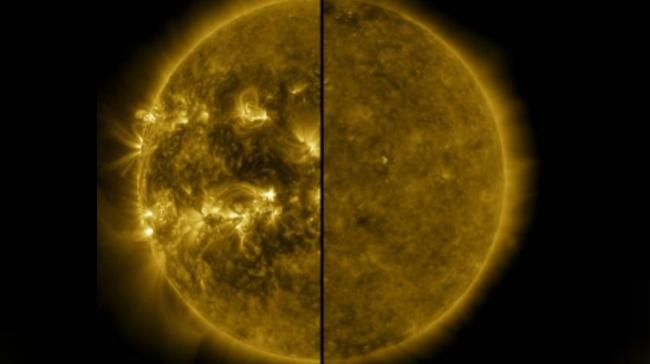NASA, NOAA Scientists Explain What Solar Cycle 25 Means

Solar Cycle 25 has started. Experts from NASA and the National Oceanic and Atmospheric Administration (NOAA) discussed their analysis and predictions of the current solar cycle during a media event on Tuesday. The scientists also discussed how the coming upswing in space weather will affect our lives and technology on Earth, as well as space astronauts.
An international group of experts co-sponsored by NASA and NOAA, the Solar Cycle 25 Prediction Panel announced that solar minimum occurred in December 2019, marking the beginning of a new solar cycle. Scientists use sunspots to track changes in the solar cycle.
Lika Guhathakurta, solar scientist at the Heliophysics Division at NASA Headquarters in Washington said that, “As we emerge from solar minimum and approach Cycle 25’s maximum, it is important to remember solar activity never stops; it changes form as the pendulum swings."
Solar activity is associated with the dark blotches on the Sun, mostly as the source of giant explosions such as solar flares or coronal mass ejections that can expel large quantities of light, energy, and solar material into space.
NASA and NOAA work together with the Federal Emergency Management Agency and other federal agencies and departments on the National Space Wetter Policy and Action Plan to strengthen space weather preparedness and protect the country from space weather hazards. NOAA offers real-time monitoring of space weather forecasts and satellites.
The prediction panel reviewed monthly data on sunspots from the World Data Center for the Sunspot Index and Long-Term Solar Observations, based at the Royal Observatory of Belgium in Brussels, to determine the start of a new solar cycle.
Frederic Clette, the center’s director and one of the prediction panelists said that, “We keep a detailed record of the few tiny sunspots that mark the onset and rise of the new cycle. These are the diminutive heralds of future giant solar fireworks. It is only by tracking the general trend over many months that we can determine the tipping point between two cycles.”
Biesecker said that, “Just because it’s a below-average solar cycle, doesn’t mean there is no risk of extreme space weather. The Sun’s impact on our daily lives is real and is there. SWPC is staffed 24/7, 365 days a year because the Sun is always capable of giving us something to forecast.”
(Inputs from NASA blog)






